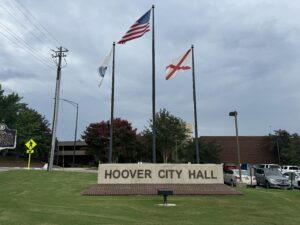Will economic boom complicate curbing immigration?
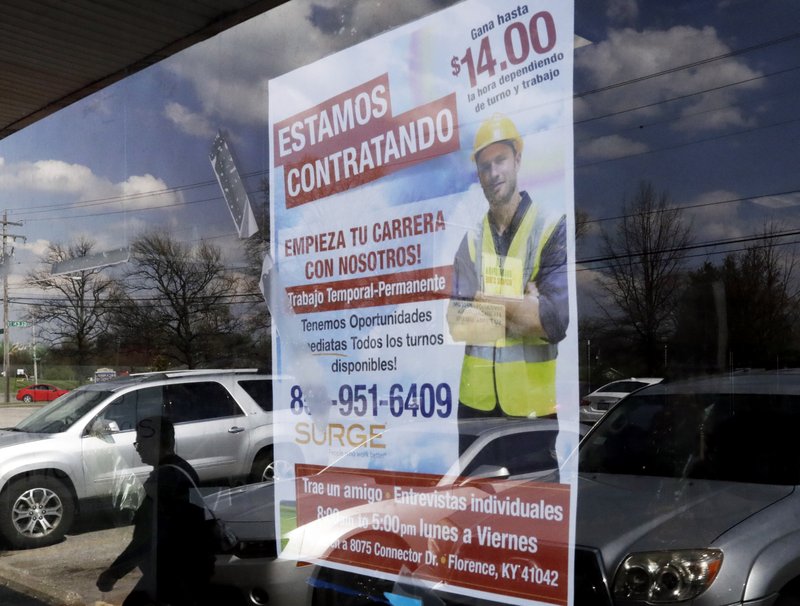
One of President Donald Trump’s priorities, low unemployment, is complicating another: curbing immigration. With the number of jobs available exceeding the number of Americans seeking jobs, employers are looking beyond the border to fill openings, and migrants are coming to the country in search of work. Hotel and restaurant owner Todd Callewaert is short more than two dozen workers this season for his Mackinac Island, Michigan, businesses. “You can’t hire a line cook right now, it’s impossible, even for 20 bucks an hour,” he said. “We usually fill the gap with visa workers, but we can’t even get those this year.” The Labor Department said Friday the unemployment rate was 3.9 percent, near the 18-year low set in May, and employers are adding jobs at a faster pace than last year. Trump has made clear employers should be trying to attract American workers through wage increases and other incentives, not filling jobs with immigrants. “Curbing immigration is essential to growing wages and ensuring available jobs go to American workers, not foreign workers,” Deputy White House Press Secretary Hogan Gidley told AP. “As immigration curbs are put into place, more and more Americans will be absorbed back into the workforce, especially those who have been left out due to poor work history or difficult life circumstances.” The administration has made it harder to come to the U.S. for work, legally or otherwise. Work visas are costly, complicated and limited. Large-scale, job-seeking migration through a porous border is long gone. This summer, the administration tried to deter would-be immigrants by adopting a “zero-tolerance” policy, prosecuting anyone caught crossing the border illegally. It resulted in nearly 3,000 children separated from their parents at the border, prompting international outrage. Trump eventually stopped the separations and the government was forced by a judge to reunify families. Still, tens of thousands of people cross the border illegally every month, many seeking asylum from violence. But often, they’re coming because of the prospect of work. Dala Edilson Ba Juc traveled with his 12-year-old daughter from Guatemala to the U.S. — only to be separated from her at the border, reunited and deported home. Sitting at an immigration facility in Guatemala City, he said they came for work. “I needed to try to make a better life for my family — I wanted them to have what I could not give them here,” he said. “There are many, many jobs in the States.” Frandy Frauville, 35, joined a wave of Haitians who came to Tijuana, Mexico, from Brazil starting in 2016. Brazil welcomed Haitians after Haiti’s 2010 earthquake. But Frauville grew tired of factory jobs in Mexico that barely allowed him to cover rent and food, and, lured by the prospects of better work and joining family near Miami, he lined up with his 5-year-old daughter at a border crossing. “I’ll take whatever I can get,” he said. And Rolando Antonio Bueso Castillo, who was separated from his infant Johan, was making only $10 a day driving a bus in Honduras. He was captured and quickly deported while his baby remained behind for five months. He said he made the difficult journey because his brother had secured him a job in Maryland. Someday, he said, his son will ask what happened, and why he had left him in the United States. “I’ll tell him the truth,” he said. “We thought we had a good plan to give him a better life.” Many economists say immigration is actually good for the economy and migrants provide complementary work to the jobs Americans do. Despite Trump’s push, some business owners say they just can’t get Americans to fill the jobs. A.J. Erskine is vice president of Cowart Seafood Group, which includes a Virginia oyster company of about 75 employees. “Entry-level is $12.13 an hour,” he said. “I don’t know how much higher we can go without being unable to sell oysters. He said the company has been in business more than a half-century, and that despite massive recruiting efforts, it can’t keep American workers. “We just don’t have people who want to come out and shuck oysters at 3 in the morning — and I don’t blame them,” he said. Some, like Erksine, are willing to front the cost associated with a temporary work visa, about $4,000 per employee for workers holding down seasonal, non-agricultural jobs. But the visas are capped at 66,000 annually, with 15,000 additional visas this year. Economists say the hiring crunch could be eased in part by increasing the number of visas available during boom years, and decreasing them when the economy is weaker. But those changes must be made by Congress. Those turning a blind eye to immigration status, or hiring people with false identification face crackdowns by immigration agents. Agents raided an Ohio garden center in the summer, arresting 114 workers and accusing the business of unlawful employment of aliens and fraud. “It’s not worth the risk for us to hire people we’re not sure about,” said Callewaert, the hotel and restaurant owner. But a lack of staff means the business can’t grow, he said. Rep. Dave Brat, R-Virginia., a member of the conservative House Freedom Caucus, said he did not think the lower unemployment rate would weaken efforts to restrict illegal immigration. “The irony is it makes it more transparent what the real problem of the labor market is,” Brat said, citing about 10 million Americans not in the labor force. He called for improved education and imposing work requirements on food stamp recipients to get more of these Americans in the workforce. “The answer is not to bring in 10 million folks from abroad,” Brat said. Republished with the permission of the Associated Press.
Martha Roby: Spreading the word on constituent services

As your representative in Congress, one of my top priorities is assisting the people of Alabama’s Second District with various issues that may arise with the federal government in addition to offering numerous other resources. My offices offer a number of constituent services, and I’d like to take a moment to share a few of them with you so that you can take full advantage of the assistance my offices can provide. Perhaps most importantly, my district offices in Montgomery, Dothan, and Andalusia help our constituents with casework. This means if you’ve placed an inquiry with a federal agency like the VA or Social Security Administration and haven’t received an answer in a timely fashion, or if you feel you have been treated unfairly, my district offices might be able to help resolve the problem or provide information you need. If you’re currently experiencing issues with one of the federal agencies, I encourage you to contact one of my offices as soon as possible so we can do our best to get the issue resolved. Secondly, if you are planning a trip to Washington, D.C., my staff is available to help you obtain tickets for tours of the U.S. Capitol building and other attractions, such as the White House, the Supreme Court, the Library of Congress, and more. Of course, please be advised that advance notice is often necessary, especially when requesting to tour the White House. If you are planning to visit our nation’s Capital, I hope you’ll contact my Washington office as early as possible. We want to help you have a wonderful experience. Third, did you know that you can purchase an American flag through my office? You also have the option to request that your flag be flown over the Capitol building before it is sent to you. I believe this is a really unique, special way to commemorate any important occasion for yourself or a loved one. If you’re interested in taking advantage of this particular service, make sure you contact my office in Washington, and we would be happy to make it happen. There are many other services available through my office, including service academy nominations, congressional commendations, presidential greetings, assistance with federal grant applications, and more. I am glad to offer these services, and I hope you will pass this information along to your friends and family so they are aware of what’s available to them, too. Below you will find the contact information for all of my offices, and of course, all of this information can be found on my website – just visit roby.house.gov/constituent-services. My staff and I work for you, and we look forward to assisting you in the future. Washington office: 442 Cannon House Office Building Washington, D.C. 20515 (202) 225-2901 Montgomery office: 401 Adams Avenue, Suite 160 Montgomery, AL 36104 (334) 262-7718 Dothan office: 217 Graceland Drive, Suite 5 Dothan, AL 36305 (334) 794-9680 Andalusia office: City Hall 505 E. Three Notch Street, Suite 322 Andalusia, AL 36420 (334) 428-1129 ••• Martha Roby represents Alabama’s Second Congressional District. She lives in Montgomery, Alabama, with her husband Riley and their two children.
Walt Maddox has more cash on hand, more individual donors than Kay Ivey
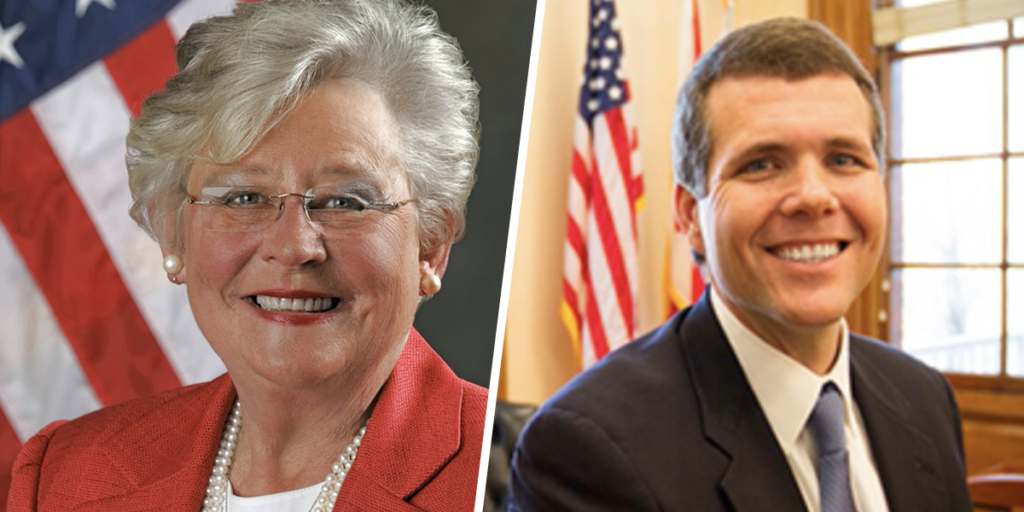
Campaign finance reports filed this week with the Secretary of State’s office show gubernatorial candidates Walt Maddox and Kay Ivey very close to one another in campaign fundraising; with Maddox showing more cash on hand. This week, benefiting from individual donations from across the state, Maddox closed the gap between himself and Ivey garnering almost $246,000 in campaign contributions. Ivey raised just a hair more than Maddox, reporting $248,523 in campaign contributions. The real difference is in the cash on hand totals. Last month Maddox reported $222,442 in cash on hand after receiving numerous donations from a plethora of individuals, while Ivey’s report revealed she had $458,674 in cash on hand. After this week’s filings, Ivey showed $271,477 in cash on hand while Maddox reported $313,249 in cash leftover from the month’s expenditures. “We are very encouraged by the latest fundraising report. Not only are we neck and neck with Kay Ivey in this month’s total, we have more cash on hand. Most exciting is the fact that we had over 40 pages of individual donors and Kay only had 12,” said Maddox’s Communications Director Chip HIll. “This continues to be a great indicator of the popular support that’s out there for Walt Maddox as more and more voters, Republicans and Democrats, respond to Walt’s vision for Alabama. While we certainly feel momentum is in our favor, we know that Kay Ivey is a formidable opponent who after 30 plus years in Montgomery knows how to find money.” Kay Ivey Campaign finance report – July: Kay Ivey Monthly Campaign Finance Report – July 2018 Walt Maddox Campaign finance report – July: Walt Maddox Monthly Campaign Finance Report – July 2018
Trump administration proposes car-mileage rollback; states sue in protest
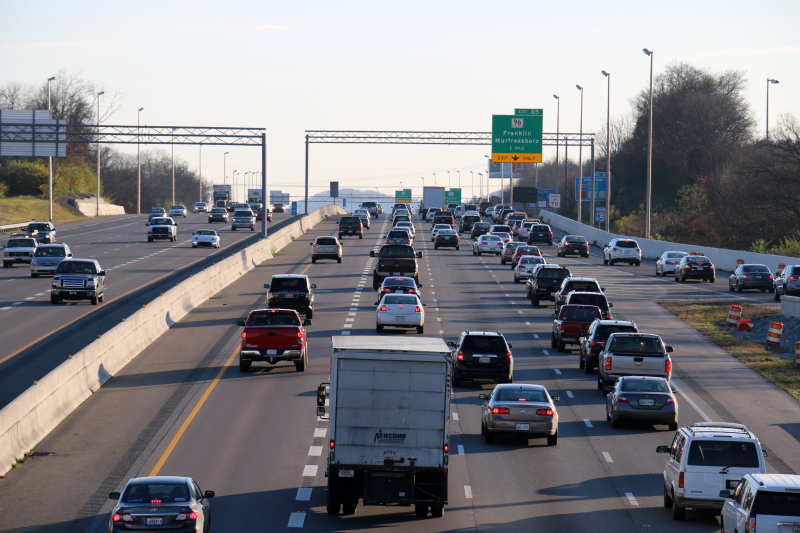
Citing safety, the Trump administration on Thursday proposed rolling back car-mileage standards, backing away from years of government efforts to cut Americans’ trips to the gas station and reduce unhealthy, climate-changing tailpipe emissions. If the proposed rule becomes final, it could roil the auto industry as it prepares for new model years and weaken one of the federal government’s chief weapons against climate change — regulating emissions from cars and other vehicles. The result, opponents say, will be dirtier air and more pollution-related illness and death. The proposal itself estimates it could cost tens of thousands of jobs — auto workers who deal with making vehicles more fuel efficient. The administration also said it wants to revoke an authority granted to California under the half-century-old Clean Air Act to set its own, tougher mileage standards. California and 16 other states already have filed suit to block any change in the fuel efficiency rules. “The EPA has handed decision making over to the fossil fuel lobbyists…the flat-Earthers, the climate change deniers,” said Massachusetts Attorney General Maura Healey. The proposal would freeze U.S. mileage standards at levels mandated by the Obama administration for 2020, when the new vehicle fleet will be required to hit an average of 30 miles per gallon in real-world driving. The proposed change, halting further improvement requirements, stakes its case on consumer choice and on highway safety claims challenged by many transportation experts. The administration says waiving requirements for greater fuel efficiency would make cars and light trucks somewhat more affordable. And that, it said, would get vehicles with the latest technology into the hands of consumers more quickly. It’s got “everything to do with just trying to turn over the fleet … and get more clean and safe cars on the road,” said Bill Wehrum, assistant administrator of the Environmental Protection Agency. The administration will now seek public comment on its proposal and a range of other options, including leaving the tighter, Obama fuel standards in place. Some Republican lawmakers supported the mileage freeze, but environmental groups and many states assailed it. “This has to be absolutely one of the most harmful and dumbest actions that the EPA has taken,” said Healey of Massachusetts, one of the attorneys general from 19 states and the District of Columbia objecting to the change. “It’s going to cost drivers here and across the country hundreds of millions of dollars more at the pump.” The EPA under President Barack Obama had proposed mileage standards that gradually would become tougher, rising to 36 miles per gallon in 2025, 10 mpg higher than the current requirement. California and the automakers agreed to the rules in 2012, setting a single national fuel economy standard. Soon after taking office, President Donald Trump called for a rollback, urging “common sense changes” if the mileage requirements threatened auto industry jobs. However, his administration’s report on Thursday projects that relaxing mileage standards would cost 60,000 auto jobs by 2030. Those losses would hit the estimated 200,000 U.S. jobs that deal with making vehicles more fuel efficient, said Simon Mui of the Natural Resources Defense Council. A Transportation Department spokesperson called the estimate of job losses “rough approximations.” Two former EPA mileage officials said the administration’s proposal departed from years of findings on fuel efficiency, car safety, exhaust emissions and costs. “They don’t offer any meaningful example of what has changed so dramatically” to warrant the reversal, said Jeff Alson, who until this spring was a senior engineer in the EPA’s transportation and air quality office. “In my opinion the only way they got there was, they knew what kind of results they were told to get and they cooked the books to get that result.” Chet France, an EPA senior executive until his retirement in 2012, called the administration’s contention that the mileage freeze would cause only a tiny increase in climate-changing exhaust emissions “bogus.” California Gov. Jerry Brown said his state “will fight this stupidity in every conceivable way possible.” The Obama administration had planned to keep toughening fuel requirements through 2026, saying those and other regulations on vehicles would save 40,000 lives annually through cleaner air. That argument remained on the EPA’s website Thursday. According to Trump administration estimates, the Obama fuel efficiency standards would raise the price of vehicles by an average of $2,340. That would price many buyers out of the new-vehicle market, forcing them to drive older, less-safe vehicles that pollute more, the administration says. Heidi King, deputy administrator of the National Highway Traffic Safety Administration, said the freeze would reduce highway deaths by 1,000 per year “by reducing these barriers that prevent consumers from getting into the newer, safer, cleaner, more fuel-efficient cars.” But private transportation experts say there are so many factors involved that the 1,000-lives figure is questionable. The affordability argument also ignores thousands of dollars of saving in fuel costs for each driver over the life of a car, opponents of the rollbacks said. Longstanding federal legislation has allowed California to set its own mileage standards given the choking smog that still sometimes blankets Los Angeles and other central and Southern California valley cities. More than a dozen states follow California’s standards, amounting to about 40 percent of the country’s new-vehicle market. A drawn-out legal battle over the standards could hurt the auto industry as it tries to plan for coming model years. The Alliance of Automobile Manufacturers, a main industry group, sought to stave off any dispute between California and the federal government that could split the U.S. car market: “We urge California and the federal government to find a common sense solution that sets continued increases in vehicle efficiency standards while also meeting the needs of American drivers.” In 2012, when the standards were first adopted, cars were about 50 percent of new-vehicle sales. Now they’re only about one-third, with less-efficient trucks and SUVS making up the rest. Republished with the permission of the Associated Press.
200 schools selected as official Alabama Bicentennial schools
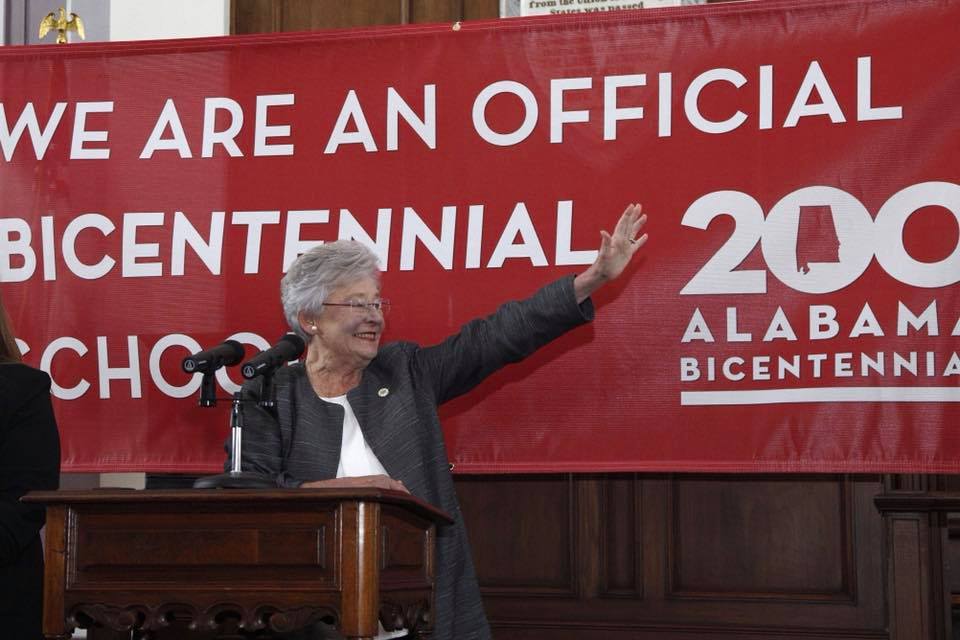
Governor Kay Ivey announced Friday the 200 schools selected as official Alabama Bicentennial Schools. Launched by Ivey in December 2017, the Alabama Bicentennial Schools Initiative encourages all public, private, and homeschool students and teachers to participate in the celebration of Alabama’s 200th anniversary of statehood in 2019. In early 2018, all K-12 schools in Alabama were invited to submit a proposal that engages in outreach and improvement projects to connect their classrooms with their local communities. From a competitive pool of nearly 400 proposals, 200 schools were selected to be official Alabama Bicentennial Schools and receive $2,000 grants to support the implementation of their projects. Additionally, 56 schools received honorable mentions and $500 grants. Schools were chosen through a review process involving committees of local educators, community leaders, and private citizens. “It makes me so proud to see such a strong showing of schools participating in the program. It is an honor to recognize these outstanding schools and their projects as we head into Alabama’s bicentennial year,” Ivey said. “The Alabama Bicentennial celebration is about bringing communities together and getting all of our citizens involved. The schools being honored are a great representation of that goal.” Representing all corners of the state, the selected schools have developed a wide variety of projects that will make meaningful contributions to their local communities. Ranging from oral history projects to community gardens to mentorship programs, these projects will foster new relationships between schools, students, and local citizens, extending well beyond Alabama’s bicentennial celebration. “One of the core objectives of the bicentennial is to get Alabamians thinking about what makes our state special, and what they want it to be,” said Steve Murray, co-chair of the Bicentennial Commission’s Education Committee. “The terrific projects developed by the Alabama Bicentennial Schools will create opportunities for students to learn about the importance of community, and to discover the ability they have to shape the future of their corner of the state.” The Alabama Bicentennial Schools Initiative is presented in partnership by Alabama 200, the Alabama Department of Archives and History (ADAH), and the Alabama State Department of Education (ALSDE).
Canada says Alabama could be at risk if trade negotiations disintegrate

A representative of the Canadian government on Friday warned Alabama jobs could be at risk if NAFTA negotiations are to disintegrate between the U.S. and Canada. In May, Commerce Secretary Wilbur Ross announced new tariffs on steel and aluminum from some of United State’s biggest trading partners – including Canada. In retaliation Canada has imposed new tariffs on a numerous amount of American goods, from steel and aluminum to whiskey and toilet paper. The country has been the top export market for Alabama since at least 2014. With over $4.1 billion being exported to the country in 2017, and $4.2 billion in 2016; the trade relationship between the Yellowhammer State and Canada has created 111,200 jobs. According to the Alabama Newscenter in 2016 alone, 13 different Canadian firms provided new investments in the state totaling $145 million and creating nearly 530 jobs. But Ashante Infantry, the Communications officer for the Canadian Consulate General in Atlanta warns that the relationship between the two entities could be at risk. “The United States and Canada enjoy one of the closest relationships between any two countries in the world,” Infantry said, according to the Alabama Political Reporter. “Since 1994, The North American Free Trade Agreement (NAFTA) has encouraged the trading of goods and services between the U.S. and Canada to promote economic vitality for both countries, but that future is uncertain. If current NAFTA negotiations break down, American jobs could be at risk, and the prices for items such as groceries to cars would likely rise.” “Because of NAFTA, Alabama has seen new businesses form, new job openings posted, and a more vibrant economy,” Infantry continued. “We must ensure that NAFTA is modernized for the future—so that its benefits are more widely shared, and, importantly, so that Alabama’s economy continues to prosper.” Read more on Alabama-Canadian trade relations below: Alabama-Canada Agricultural Trade
2018 statewide general election ad roundup: August 3 edition

The November 6 general election is less than 100 days away and Alabama’s candidates have taken to the internet and the airwaves with campaign ads in hopes of swaying Yellowhammer State voters to their side. This week, both gubernatorial candidates rolled out the big guns introducing their first tv ads for the general election to voters across the state and displaying qualities they believe make them excellent candidates for the position. In Governor Kay Ivey‘s new ad she highlights her success in preparing students today for the jobs of tomorrow by praising her own “Strong Start, Strong Finish” education initiative to integrate Alabama’s early childhood education, K-12 education, and workforce development into a seamless educational experience for Alabama students. Democratic candidate Walt Maddox used a bit of word play in his new ad “Running.” In the ad, Maddox comments on the different types of “running” he’s done in his lifetime: running as a football player, running one of the state’s largest cities, running as a way to improve mental clarity, and stay in shape; and running for governor. Gubernatorial ads Republican Kay Ivey: Title: Strong Start, Strong Finish Published: August 2, 2018 Tone: Optimistic Democrat Walt Maddox: Title: Running Published: July 31, 2018 Tone: Thoughtful
FAA awards Alabama another $13.5 million in grants for airport improvements

The Federal Aviation Administration (FAA) announced Thursday it will upgrade airports in Huntsville, Mobile, Dothan, Montgomery and 19 other Alabama cities, as well as locales across the nation. Alabama will benefit from more than $13.5 million FAA grants awarded by the U.S. Department of Transportation for various airport improvements to support infrastructure construction, safety advances, and equipment acquisition. “These Airport Improvement Grants are investments in our country’s critical infrastructure,” Department of Transportation Secretary Elaine Chao said. The grants – which range from $2.64 million for the Huntsville International-Carl T. Jones Field Airport to $45,000 for the Bay Minette Municipal Airport – are funded through the Airport and Airway Trust Fund and federal appropriations. “I am proud our state is receiving more funding to advance airport infrastructure,” said Alabama U.S. Sen. Richard Shelby. “These grants are important investments in the safety, security, and efficiency of local airports in Alabama. The improvements will help drive growth in local communities and directly impact the quality of life for residents and visitors.” The 24 FAA grants, totaling $13,510,593, will support the following airport projects in Alabama: Huntsville International-Carl T. Jones Field Airport, Huntsville-Madison County Airport Authority – $2,642,920 for replacement of multiple terminal building passenger boarding bridges, and apron and taxiway rehabilitation Mobile Regional Airport, Mobile Airport Authority – $1,187,722 for friction measuring equipment acquisition, airport drainage improvements, and an update to the airport master plan study Dothan Regional Airport, Dothan-Houston County Airport Authority – $1,667,165 for apron and taxiway rehabilitation Montgomery Regional (Dannelly Field) Airport, Montgomery Airport Authority – $1,404,035 for installation of perimeter fencing and taxiway rehabilitation Birmingham-Shuttlesworth International Airport, Birmingham Airport Authority – $1,375,000 for a Voluntary Airport Low-Emission project to reduce sources of airport ground emissions, improve airport air quality, and reduce the use of conventional fuels Huntsville Executive Airport Tom Sharp Jr. Field Airport, Madison County Executive Airport Authority – $1,234,700 for land acquisition Monroe County Aeroplex Airport, County of Monroe – $506,105 for runway rehabilitation Robbins Field Airport, City of Oneonta and County of Blount – $461,536 for land acquisition and runway rehabilitation Hartselle-Morgan County Regional Airport, City of Hartselle – $498,654 for apron, runway, and taxiway rehabilitation Ashland-Lineville Airport, County of Clay – $412,026 for apron and taxiway construction Brewton Municipal Airport, City of Brewton – $300,000 for runway lighting and airport beacon rehabilitation Foley Municipal Airport, City of Foley – $259,149 for taxiway construction Guntersville Municipal-Joe Starnes Field Airport, City of Guntersville – $235,858 for runway and taxiway construction and installation of perimeter fencing Isbell Field Airport, City of Fort Payne – $220,000 for installation of a runway guidance system and weather reporting equipment Evergreen Regional-Middleton Field Airport, City of Evergreen – $164,742 for runway obstruction removal Camden Municipal Airport, City of Camden – $156,298 for runway rehabilitation Jack Edwards National Airport, City of Gulf Shores – $150,000 for runway safety enhancements and taxiway rehabilitation Centre-Piedmont-Cherokee County Regional Airport, Centre-Piedmont-Cherokee County Regional Airport Authority – $150,000 for access road improvements Jeremiah Denton Airport, County of Mobile – $149,400 for installation of a runway guidance system and runway rehabilitation Craig Field Airport, Craig Field Airport & Industrial Authority – $88,245 for taxiway rehabilitation Bill Pugh Field Airport, City of Russellville – $74,598 for updates to the airport master plan study Atmore Municipal Airport, City of Atmore – $72,000 for construction of a pump fuel facility and an update to the airport master plan study Bay Minette Municipal Airport, City of Bay Minette – $55,440 for runway obstruction removal Bay Minette Municipal Airport, City of Bay Minette – $45,000 for an update to the airport master plan study In July, the FAA announced it was awarding 25 local airports throughout the Yellowhammer State will benefit from more than $25.5 million in FAA grants. This latest round of grants is in addition to the July amount.
Alabama awards $1 million to 50 elementary schools for reading success
Hoping to breathe new life into a once-thriving program, Alabama lawmakers added an additional $1 million to the Alabama Reading Initiative (ARI) budget during the 2018 Legislative Session in order to recognize Alabama elementary schools showing the most improvement in last year’s 3rd grade reading results. Divided evenly, each school selected will receive a $20,000 check from the Alabama State Department of Education (ALSDE) as a way of recognizing and incentivizing teachers and students who have worked hard to achieve proficiency in reading by the 3rd grade in last year’s statewide Scantron reading assessment. State Superintendent of Education, Dr. Eric Mackey, said the work educators across the state do every day is invaluable, however this monetary donation is another way of distinguishing the state’s top performers in the important category of 3rd grade reading. “Reading is the cornerstone to all other learning. When we make sure our students can read and comprehend what they are reading at an early age, we prepare them for a greater possibility of academic success throughout their lives,” Mackey said. “I commend the Alabama legislature for being good stewards of the limited funds we have in public education, and for recognizing the importance of reading for our youngest students.” The ALSDE will determine which 50 schools will receive the $20,000 award by measuring the percentage of third grade students that met their growth targets as measured by improvement between the initial test taken in the fall of 2017 and the final test taken in the spring of 2018 on the Scantron Performance Series Reading Assessment. All Alabama public schools with a third grade, of which there are approximately 1,071, will be included. In addition to public recognition by the Alabama State Board of Education, selected schools will be able to determine how to use their *$20,000. Karen Porter, program coordinator for ARI, said schools all across the state are working hard and showing significant growth in their reading performance. She said while student achievement is the ultimate reward, the ability to recognize the top 50 performing schools is a great additional incentive. “We are thrilled to see our schools rewarded for their hard work. Every day in Alabama educators are working diligently to provide students with a solid academic foundation,” Porter said. “These awards show that regardless of a student’s zip code, with hard-working educators and students, growth is not only possible, it should be expected.” The announcement of which schools have been selected will occur on Tuesday, August 21, 2018. Selected schools will be acknowledged during a recognition ceremony in Montgomery on Thursday, September 13, 2018 at the ALSDE.
Rauf Bolden: Finding out what residents want in Orange Beach
Without sophisticated polling and surveys to guide decision making our cities will become intellectually bankrupt, and politically rudderless in a sea of data. The constant purr of good news from City Hall has yielded an imaginary hashtag, #NoPublicData, where the wildfires of rumors can only be quelled with real proof. Orange Beach should be the data-mining leader in Baldwin County, shirking from its role does not do anyone any good. Customer-service surveys are not tealeaves suggesting harmony. They are an easy way to get feedback from residents, having a link on the website for “Take Our Survey”, allowing survey designers to change the survey monthly, gathering different sorts of information. Orange Beach is already paying for Google and Seamless Forms. Both are built for data collection. These are not your only options. Survey Monkey, PollDaddy, SurveyGizmo, Zoho Survey, LimeSurvey, and SurveyLegend are all free, with restrictions. The reasons for improving customer service are real. Collected data can target the needs of a city’s constituents, utilizing taxpayer dollars in the most productive way instead of assuming people want to give government the keys to the castle, and constituents won’t ask too many questions. What do you want out of the survey? Here are sample questions from Survey Monkey: How likely is it that you would recommend this city to a friend or colleague? Overall how satisfied or dissatisfied are you with our city? Which of the following words would you use to describe our city? How well did our city meet your needs? How would you rate the quality of your experience in our city? How would you rate the value for money of our city? How responsive have we been to your questions about our city? How long have you been visiting our city? How likely are you to visit our city again? Do you have any other comments, questions, or concerns? The questions above target general-customer satisfaction, but they can be focused, and applied to issues like short-term rentals in residential areas, the need for a hospital, public safety improvements, or what trees to plant in the beach median. Now that you have collected lots of data, the results need to be collated. Seamless Forms has a built-in engine for evaluating data. Google’s Cloud Machine Learning (search “Google cloud machine learning”) is free for testing on a project like the 56 video-surveillance cameras at the Art Center, analyzing video feeds and facial recognition, understanding how people use the facility. Privacy is certainly going to be a talking point. “Online surveyors commit multiple violations of physical, informational, and psychological privacy that can be more intense than those found in conventional survey methods. Internet surveys also invade the interactional privacy of online communities, a form of privacy invasion seldom encountered with traditional survey methods,” according to Social Science Computer Review. Squaring the circle with privacy is important. The City of Orange Beach’s privacy policy outlines how they will secure your information like name, email, telephone number, family members, home address, SSN and direct-payment info. DIY surveys don’t produce reliable results. “Employees and their relationship with your company are different from your customers and their relationship with your company,” according to InfoSurv a marketing-research firm. Raw data is often skewed in DIY surveys. Orange Beach conducted one DIY Survey in 2015, yielding the following results from 1,424 residents: 5.76% completely satisfied; 36.80% mostly satisfied; 26.19% were neutral; 23.74% mostly dissatisfied; 7.51% dissatisfied, according to this survey’s designer. It looks as though 36 out of every 100 people living in Orange Beach are mostly satisfied. In contrast, Pensacola is reporting a 77% satisfaction rate, according to the Pensacola News Journal. Obviously numerical analysis is not enough. Other techniques must be applied to make sense of human behavior in big datasets. We can provide better data for our businesses, residents, and visitors, simply applying technologies that are within our grasp, and making the data public for topics like business-owner satisfaction, rating the quality of the beach, flood-insurance pricing, traffic statistics, and employee contentment. These data give constituents a better understanding of what is going on under the hood. Orange Beach should be the data-mining leader in Baldwin County, shirking from its role does not do anyone any good. ••• Rauf Bolden is retired IT Director at the City of Orange Beach, working as an IT & Web Consultant on the Beach Road. He can be reached at: publisher@velvetillusion.com.

